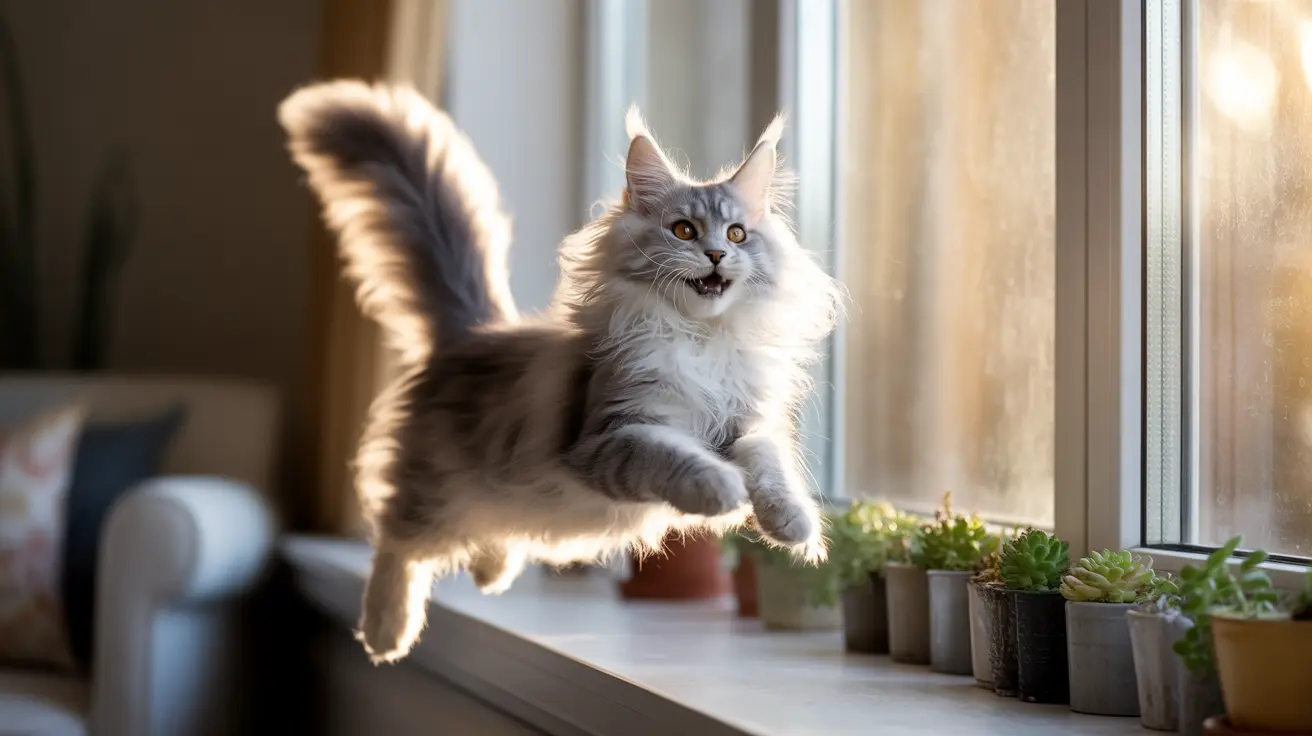If you've ever heard your cat make a delightful rolling "prrrp" sound, you've experienced cat trilling. This charming vocalization, distinct from meowing or purring, is one of the most fascinating ways cats communicate with both humans and other felines. Let's explore the meaning behind this unique sound and understand why cats use it in various situations, particularly during activities like jumping.
Trilling is a high-pitched, melodious sound that cats make with their mouths closed, often described as a cross between a purr and a meow. This vocalization holds special significance in feline communication and can convey various emotions and intentions.
Understanding Cat Trilling Basics
Cat trilling is primarily a form of positive communication that cats learn from their mothers at a young age. Mother cats use trills to get their kittens' attention and encourage them to follow, a behavior that carries into adulthood as a friendly greeting or attention-seeking gesture.
Unlike other cat vocalizations such as hissing or growling, trilling is almost always associated with positive emotions and social bonding. It's a behavior particularly common in domestic cats, showing how they've adapted their communication to interact with human companions.
Why Cats Trill During Different Activities
During Jumping
When cats trill while jumping, it often indicates one of several states:
- Excitement about reaching a destination
- Self-encouragement before a challenging leap
- Attention-seeking behavior
- Expression of confidence or satisfaction
Social Situations
Cats frequently trill in social contexts to:
- Greet their human family members
- Acknowledge other cats
- Express contentment
- Signal their presence in a friendly way
The Science Behind Cat Trilling
Trilling occurs when cats rapidly vibrate their vocal cords while keeping their mouths closed. This unique sound production method creates the characteristic rolling sound that distinguishes trilling from other cat vocalizations. Research indicates that trilling is the second most common cat vocalization after meowing.
Different cat breeds may exhibit varying levels of vocal behavior, with some breeds like Siamese and Maine Coons being particularly prone to trilling. This variation can be attributed to both genetic factors and learned behaviors.
When to Pay Attention to Trilling
While trilling is typically a positive behavior, changes in trilling patterns might warrant attention:
- Sudden increases in frequency
- Changes in tone or intensity
- Trilling accompanied by unusual body language
- Excessive vocalization in older cats
Frequently Asked Questions
Why do cats trill when they jump?
Cats often trill when jumping to express excitement, build confidence, or seek attention. It's usually a positive vocalization indicating they're engaged in an activity they enjoy.
What does it mean when my cat trills at me?
When a cat trills at you, it's typically a friendly greeting or an attempt to get your attention. It's one of the most social and affectionate sounds cats make.
How can I respond to my cat's trilling behavior?
Acknowledge your cat's trilling with gentle attention, speaking softly back, or light petting. This positive reinforcement helps strengthen your bond.
Is cat trilling a sign of happiness or nervousness?
Cat trilling is primarily a sign of happiness and positive emotion. However, in some cases, it might indicate nervousness before a challenging jump or new situation.
Do all cats trill and what influences this behavior?
Not all cats trill, as it's influenced by factors like breed, personality, and early socialization. Some breeds, like Siamese cats, are more vocal and likely to trill frequently.
Understanding your cat's trilling behavior can help strengthen your bond and better interpret their needs and emotions. By recognizing this unique form of communication, you can better respond to your feline friend and enhance your relationship.






